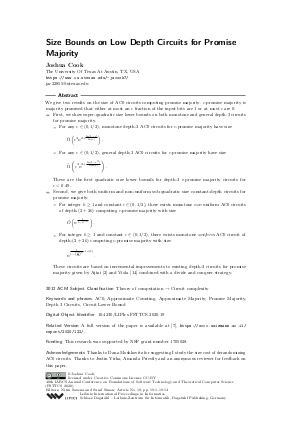LIPIcs.FSTTCS.2020.19.pdf
- Filesize: 460 kB
- 14 pages

 Creative Commons Attribution 3.0 Unported license
Creative Commons Attribution 3.0 Unported license















Feedback for Dagstuhl Publishing